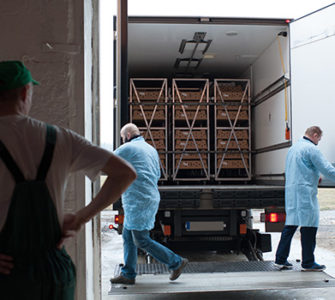Biosecurity, disinfection, downtime keys to better ILT control
Strict biosecurity is the best defense against infectious laryngotracheitis (ILT) in broiler flocks, advises Maricarmen García, PhD, a professor at the University of Georgia.
Although breeders and commercial layers are usually vaccinated against ILT, broilers are not unless there’s an outbreak in the area.
The leading way broiler flocks become infected with the ILT virus is due to contamination by farm personnel, and that’s why strict biosecurity is required to protect flocks from this highly contagious disease, García told Poultry Health Today.
There are recorded cases involving farm workers who brought ILT to commercial flocks after contact with backyard flocks. The reverse has also occurred — farm workers have transmitted ILT from infected commercial flocks to backyard flocks, she said.
García emphasized that extra biosecurity measures are also needed if farm workers are in contact with flocks that have and have not been vaccinated against ILT, especially if the vaccinated birds received a live attenuated vaccine, she said. Poultry producers have learned over the years that birds vaccinated with a live vaccine are a source of the virus for unvaccinated birds.
Don’t neglect cleaning, disinfection
Thorough cleaning and disinfection of poultry houses during downtime between flocks is critical to prevent ILT. When market prices are good, producers want to produce more meat and may reduce downtime between flocks. The result can be less attention paid to cleaning and disinfection, she explained.
On farms vaccinated for ILT due to a local outbreak, there will be remnants of ILT in buildings that housed ILT-vaccinated broilers, and in this case, thorough cleaning and disinfection are particularly important, García noted.
In broiler-producing areas endemic for ILT, the local guidelines usually advise at least 14 days of downtime and composting litter between flocks. Composting, in addition to cleaning and disinfecting the broiler house, works well to get rid of the virus, she said.
García recommended cleaning water lines with a bleach product during downtime between flocks. While this adds to the producer’s already heavy workload, it pays off by helping stop the spread of disease.
Researchers are still trying to identify weak points in biosecurity that enable ILT to get into a flock and where the virus resides once it’s in the broiler house. The current thinking is that the virus can spread throughout the broiler house more than poultry producers realize, she said.
Posted on November 1, 2018

















